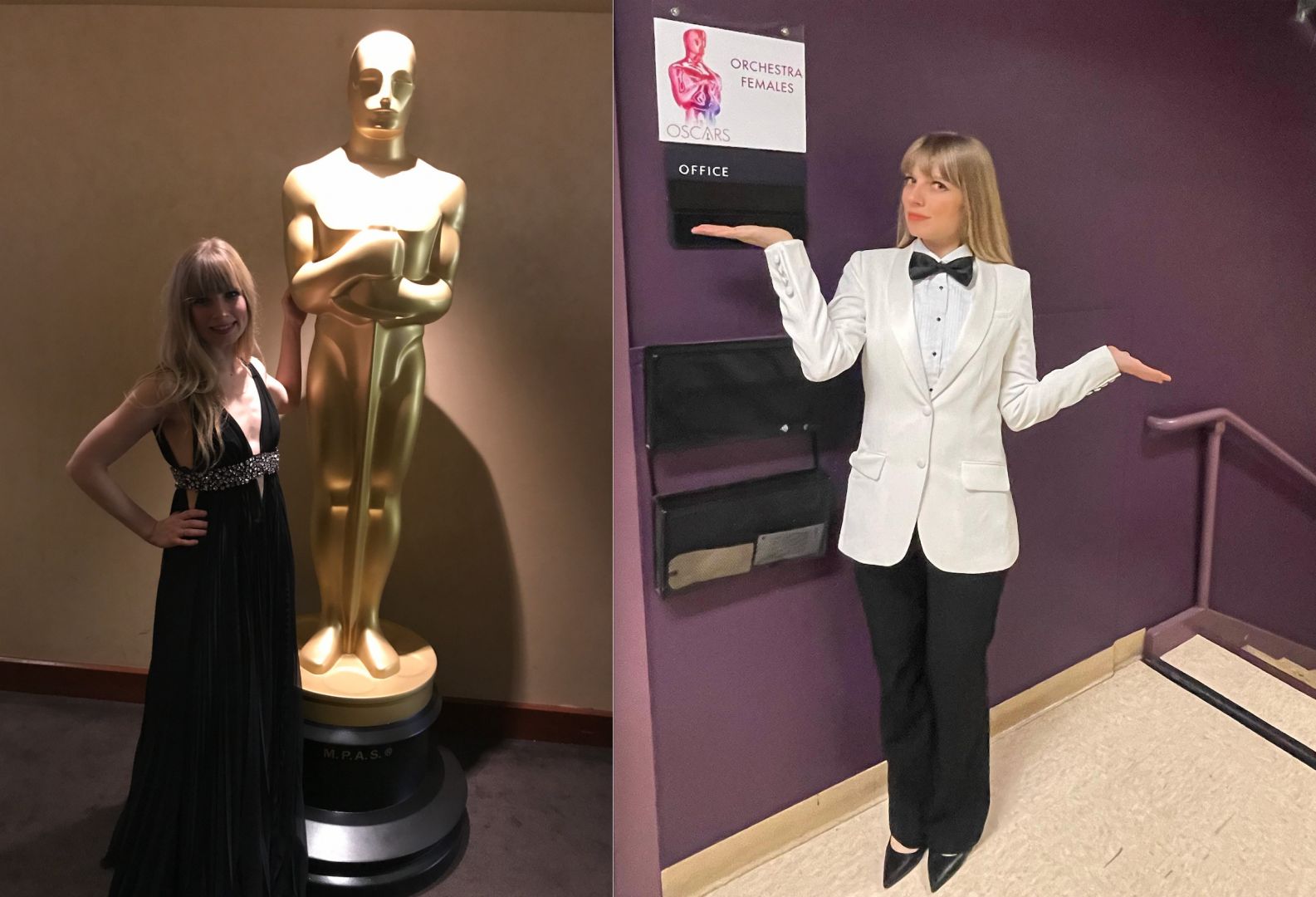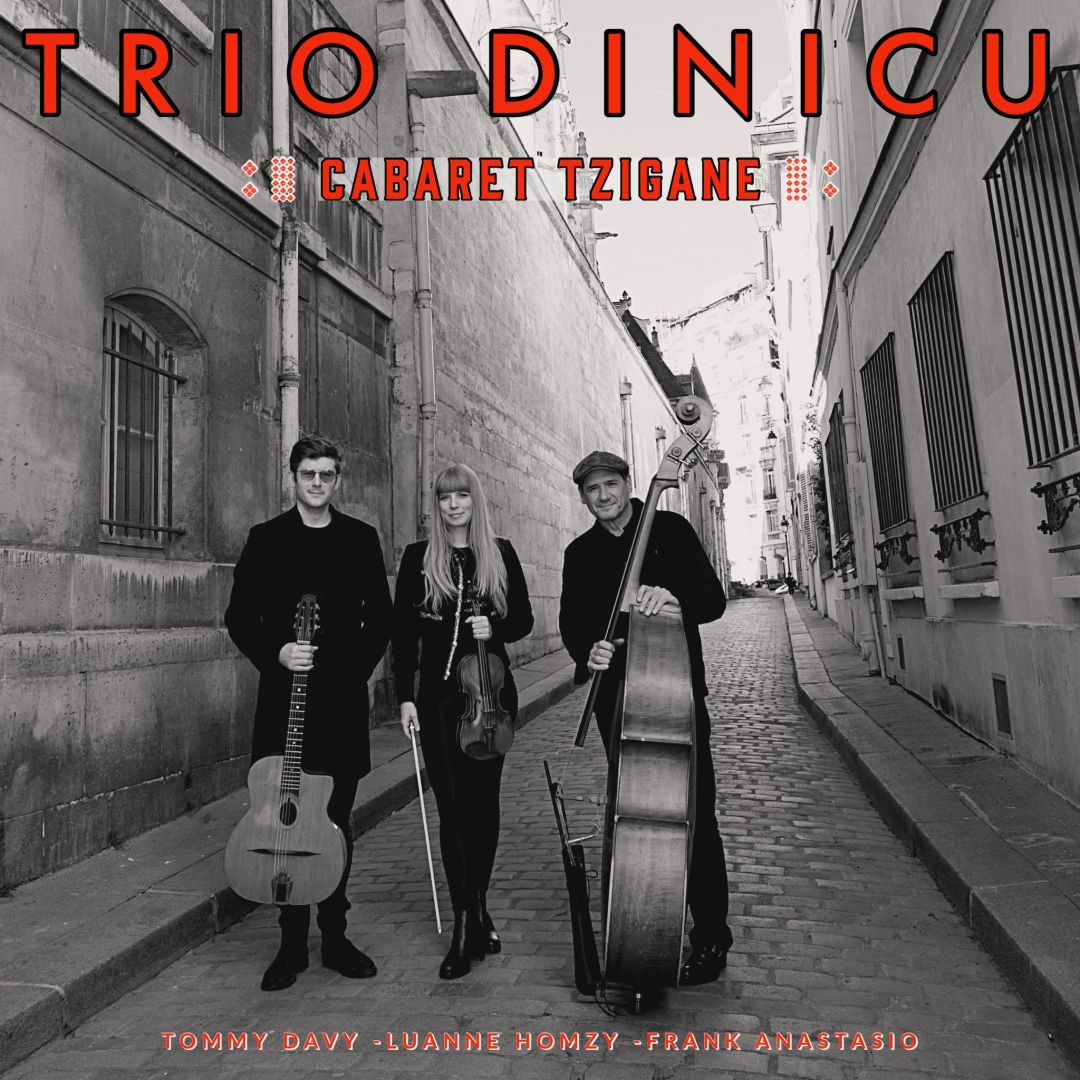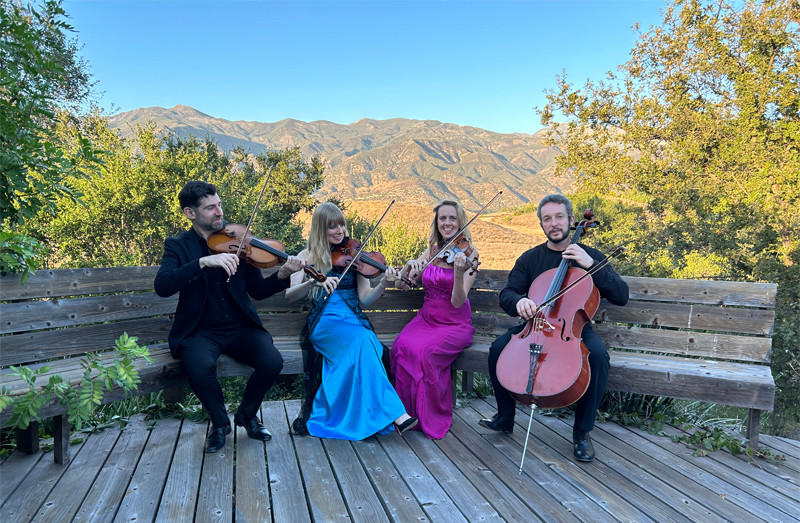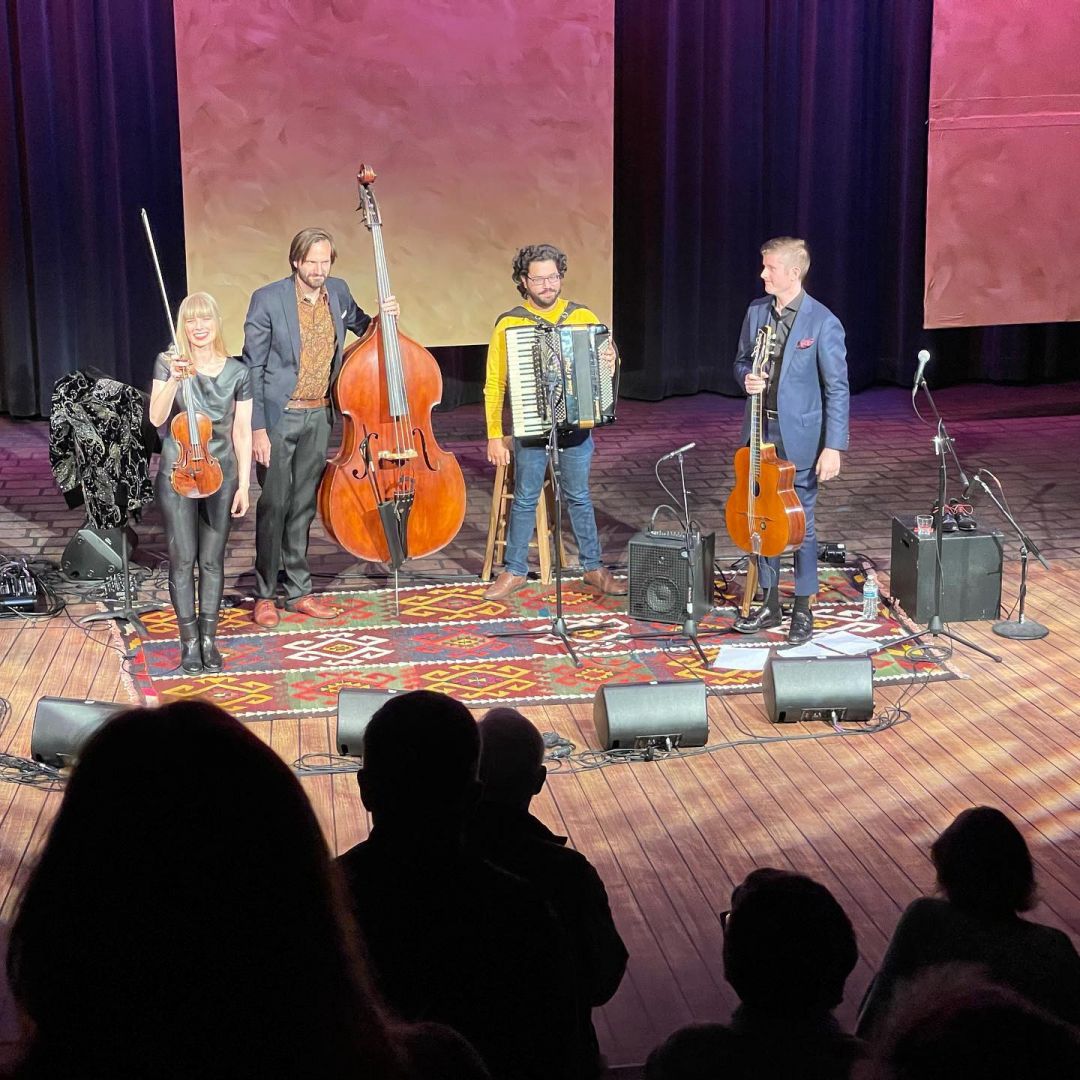Meet Luanne Homzy | Violinist, Performing Artist, Recording artist, Composer, Producer


We had the good fortune of connecting with Luanne Homzy and we’ve shared our conversation below.
Hi Luanne, how do you think about risk?
Risk is knowing anything can happen—regardless of my intention—and remaining comfortable. I put all of myself into my work, always, and while I strive to give the best result, I don’t focus on the outcome. Ergo, the risk annihilates itself, since it’s no longer about potential loss, and everything becomes a gain (learning + experiencing). This goes for both career-related decisions and the products themselves (performances, recordings, compositions, teaching, etc).
As an introvert, I tend not to “operate” or go out of my way to make myself known. Looking over my career so far, it’s often been the producers, composers, contractors, and marketers initially hiring me, who discover and promote my work more effectively than I ever could. In that sense, the risk I take is by simply putting my music out there, whether in the form of a performance, recording, or social media post, and so on. When I decide to undertake and record a project such as “Cabaret Tzigane”—an album of Gypsy/Roma music I recorded in France with my group, Trio Dinicu—I craft a very personal musical statement that I hope will be a worthy contribution to the collective creative sphere. And I believe it is.


Alright, so let’s move onto what keeps you busy professionally?
I’m a classically-trained violinist raised by professional Jazz musicians. As a young child, I composed on the piano and violin and was always coming up with things “on the spot” or improvising. I decided at about fifteen that I wanted a career in music. I trained at the Colburn Conservatory—one of the top schools in the world—then on to Hamburg, Germany, where I earned a Master’s Degree in Chamber Music, while touring with my piano trio, The Saguaro Piano Trio. I spent a lot of my time figuring out how to get away with the least amount of practice possible. I loved making music, but had other compelling desires feeding my artistic spirit and wanted to experience life as much as possible. Though, to be clear, if I was preparing for a competition, I practiced 4-6 hours a day. But overall, my goal was to spend the least time necessary to achieve the best result. There was a big world out there.
If you look me up on IMDB or Allmusic today, you’ll get an idea of the kinds of projects I’ve recorded for the past 8 years—mostly for movies, TV, streaming services, video games, and albums. I love this line of work because it fits nicely with my formative way of being—requiring the musician’s best results in a very short amount of time. Usually, we’re not given the chance to review nor practice beforehand, since the charts are often being finished just hours before the session begins. They pass the music out. We sit down and record. Thankfully, I’m a very quick sight-reader who can play with accuracy at a fast pace. I have an extreme facility creating tracks on the spot and producing unique and original strings in a variety of styles, in real time. It’s thrilling work and I love it.
I’m often hired by composers as a solo violinist on straight-up classical tracks, but specifically sought after if the piece is leaning towards folk, fiddle, Middle Eastern, Gypsy/Roma, Celtic, klezmer, jazz, Gypsy jazz, and so on, or for atmospheric and textural sounds. Recently, I was featured as a solo fiddler on Lorne Balfe’s score for “Dungeons and Dragons” as well as some of Fil Eisler’s cues for “Fire Country,” which was super fun. During the pandemic, I orchestrated “Q: Into The Storm” and recorded the strings parts with my colleague Evgeny Tonkha, a gifted cellist who runs terrific local concert series, one of them being K-17. But it’s great to be back, recording in orchestral settings, whether on the vast scoring stages at Fox, Sony, and Warner Brothers, or the smaller studios with more intimate groups such as Evergreen, EastWest, Studio City Sound, Rusk, Hollywood Scoring, The Village Recorder, to name a few. I also have a wonderful home studio where I’ve recorded loads of projects, including many episodes of the Simpsons, Star Trek Lower Decks, Forest Fire, Mank, Tenet, and Animaniacs, among others.
I’ve also had a blast performing live, on screen, and recording with Belle and Sebastian, Billie Eilish, Björk, Coldplay, Jacob Collier, Jason Derulo, Jennifer Lopez, John Legend, Lady Gaga, Michael Bubblé, Meghan Trainor, Rihanna, and gigs at the Academy Awards and Jimmy Kimmel —so grateful for all of these experiences.
In addition to recording projects and performances with my groups Trio Dinicu, The California String Quartet, and Project: CSQ, I’m currently writing a method book, “Mastering Efficient Expression for the Violin,” which explains my system of practicing as efficiently as possible while finding the truest expression when playing. Studying with renowned violin pedagogue, Robert Lipsett inspired me to think creatively about alternative ways to practice and transmit interpretation and expression to the audience. I’m looking forward to working with a publisher.
It’s been my involvement with Gypsy/Roma music that’s been most compelling. Thirteen years ago, I started learning Eastern European Folk and Gypsy/Roma music. My partner, Tommy Davy, and I formed a group with bass player, Frank Anastasio, and we’d interpret music from Eastern Europe in our style, inspired by jazz, classical, and Gypsy/Roma musicians. The band is called Trio Dinicu, and we perform across the United States, Canada, and Europe as well. Because of this, we’ve met and had the opportunity to make music with Gypsy/Roma musicians on stage, at restaurants, and in their living rooms. It’s been fascinating to learn about their history and culture, and be able to play with such outstanding talents.
Right before the pandemic, I participated in a competition in Budapest overseen by Roby Lakatos, arguably the most famous Gypsy/Roma violinist alive, called the Roby Lakatos International Improvisational Violin Competition. I was the only woman and non-European entrant, and awarded 2nd prize. Roby introduced me to another legendary violinist, Miklós Lakatos, who soon became my mentor. During lockdown, he taught me music over Skype. My Hungarian was non-existent, and his English was not much better, but we were somehow able to communicate in broken German! He would teach me the music, then ask me to play it back while accompanying me. My German wasn’t good enough to explain the “Skype delay” to him so it sounded like total cacophony when we played at the same time. As an experiment, I used those times as an opportunity to be in my world, undistracted by the bizarre rhythms and harmonies resulting from the audio lag. This genre is very loose and free when it’s slow, and extremely rhythmical when it’s fast. I had to ignore him and hope that what he was teaching me came across. He was so impressed at how fast I was learning—nearly impossible unless one’s spent a life immersed in it, because of its relation to the rhythm of their language and its idiomatic ornaments and sounds—that he asked if I could record a variety of the pieces he’d taught me, then send them back to him so he could then record to my tracks with his orchestra. I agreed, though most of the time I was unsure if I understood what I was playing! It was the most amazing feeling to get the clean tracks from him, and for the first time, hear what the music was meant to sound like! So many of the songs he taught me are so old that almost no one ever plays or sings them anymore, and many had never been recorded before. Until now.
My challenges include overcoming my introversion and reaching out to folks to work together. As mentioned earlier, most of my career I owe to people discovering my music. For instance, I performed a concert with Trio Dinicu in a small town in Orange County, Dana Point, years ago, and a composer, David Arkenstone, happened to be there and invited me to record on his albums. We were a perfect artistic match because although his tracks are mostly pre-written, he encourages embellishments in the style of the track, and has specific spots designed for improvisation, my wheelhouse. He also likes the sound of the Hardanger Fiddle, a Norwegian fiddle with sympathetic strings that aren’t played on/bowed on, but ring, giving a unique sound to the instrument. So, I’m now listening to Scandinavian folk music, which has added to my musical vocabulary and begun feeding my curiosity and imagination.
Lessons learned along the way…
I feel like every day is a lesson! There’s always something to learn, always something to realize, which changes my perspective—literally from minute to minute. Interacting with different people, socially or musically, is always an honor because of the uniqueness of each experience.


Any places to eat or things to do that you can share with our readers? If they have a friend visiting town, what are some spots they could take them to?
The warehouse Arts District is full of cool lofts and interesting architecture. All the amazing spots are within walking distance: coffee shops, restaurants, art galleries, and indie boutiques and bookshops. There is Boxx Coffee, artisan roasters hailing from Turkey; Hauser and Wirth Galleries, which host rotating contemporary art exhibits for free; and hauses (yes, spelling is intended!) a wonderful restaurant, Manuela. There’s Yunomi across the street, a delicious Japanese hand-roll spot with fresh food and quick service. There’s DogDrop, the best doggy daycare in town! They’re so friendly and creative, I’d introduce them to my friends. Speaking of friends, I made some amazing ones at the Venia Studio on Santa Fe—a couple who design and create their own sustainable brand of clothing, Venia. I love their style and aesthetic and they’re always hosting and curating fun and unique events.
We could head up to Franklin Village, where I used to live. Many of my favorite spots have sadly closed, but the used book and record shop, Counterpoint, is thankfully still there and I always find a treasure when I pop in. We could also hike the trails near Runyon Canyon, get a bite or a cool-weird drink at Erewhon, or head over to hike Topanga then have dinner at the Inn of the Seventh Ray. Maybe go to a Kava bar, or grab a nootropic/adaptogen-filled non-alcoholic bottle from Soft Spirits and a gorgeous raw vegan cake from Solar Return, then head back to our loft and enjoy looking through interesting books and artifacts that my partner and I have gathered from around the world.
Music-related things to do include checking out what’s going on at Disney Hall and the Hollywood Bowl, plus hidden gems, like house concerts or album release shows by artists booked smaller stages. I wish I had more time to go out and experience music, and I cannot stress the importance of doing so. There’s a lot of amazing stuff the general public isn’t aware of, partially due to the way the music industry works these days. In order to keep music creation alive—vital and evolving—we must, as a community and society, preach the value of the arts, and put more emphasis on the events and activities which support them, broadly and inclusively.
Last but not least, I’d take them to Joshua Tree/ Yucca Valley for a few days. It is such an extraordinary and special landscape, and an easy get-away from the city without the long drive. The desert aesthetic and architecture is really cool too—so many unusual Airbnbs offering restorative stays! The sunrise and sunset are completely magical, and nighttime is the opposite of LA’s, with stars blanketing the sky and the surrounding quiet. The trails in Joshua Tree National Park are varied for all levels, from jumbo rocks and the Joshua trees, themselves, to off-roading and the mines, and myriad trails I have yet to explore.


Who else deserves some credit and recognition?
There are so many people for whom I am infinitely grateful to for lighting my path: My parents, Andrew Homzy and Francine Dupuis, both jazz musicians and historians; my sister, Aline Homzy, a jazz violinist and composer in her own right; all of my teachers and mentors; and my friends and colleagues. I wouldn’t be where I am today without the good and the bad, the ups and downs, which I’m thankful for as well. My partner, Tommy Davy, is the person in my life who continually inspires and challenges me, endlessly encourages and supports me as I expand my mindset and perception of the world. I shout out to him, with love and gratitude, alongside everyone I’ve encountered thus far.
Website: www.luannehomzy.com
Instagram: @luannehomzy
Facebook: https://www.facebook.com/LuanneHomzy/
Youtube: https://www.youtube.com/watch?v=gnYyL88kbQE
Other: Luanne Homzy & Miklos Lakatos Album: https://open.spotify.com/album/0oR7Re6829t4gHuPB43gN7?si=CKtB2yUcTyekKCNzwa1B2g Trio Dinicu “Cabaret Tzigane”: https://open.spotify.com/album/18qhWIVwAkMyqztTc7gu4t?si=MHJFbq57RrGktEW8XVAiGg IMDB: https://www.imdb.com/name/nm9308019/ ALLMUSIC: https://www.allmusic.com/artist/luanne-homzy-mn0002684921#credits Jedi Theme Gypsy Style: https://www.youtube.com/watch?v=EZ8OT0PZxAQ
